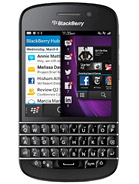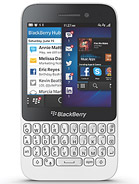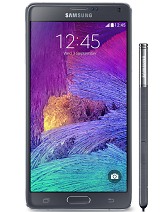BlackBerry Passport
BlackBerry Passport

Introduction
Canadian manufacturer BlackBerry looks to bring its no-nonsense smartphone approach in a form factor that is...unusual, to say the least. It's a company that's no stranger lately to being in the red for quarters on end and the Passport is yet another attempt by BlackBerry to regain its identity (and market share) in a cutthroat industry that's dominated by Android.
Even from a distance, it's apparent that the Passport is a device that's different for a reason. First, the company failed to market a "traditional" smartphone with the otherwise solid BlackBerry Z30. The BlackBerry Q5 QWERTY messenger wasn't any more successful as a return to the bread-and-butter. Now, the Passport hopes to strike gold with a formula that's the best of both worlds while being bound to neither.
The Passport certainly carries a spec sheet to put performance buffs at ease. With a Quad-core 2.26GHz Snapdragon 801 chip and 3GB of RAM, it's easily the most robust BlackBerry smartphone to date. The 4.5-inch square display is also of an impressive 1440 x 1440px, which results in an excellent 453ppi. Here's what else it brings to the table:
Key features
- 4.5" 16M-color IPS LCD capacitive touchscreen of 1440 x 1440px
- Quad-core 2.26 GHz Krait 400, 3GB RAM, Adreno 330
- 13 megapixel auto-focus camera with face detection and Time Shift, HDR, LED flash, 2MP front facing camera
- FullHD (1080p) video recording at 60fps; 720p recording with front-facing camera
- 32GB storage, microSD card slot up to 128GB; built-in Dropbox and Box integration
- Unique touch-enabled 3-row QWERTY keyboard with hardware keys
- Stereo speakers
- Ability to run Android apps (via the Amazon AppStore or sideloading)
- BlackBerry 10.3 OS with Virtual Assistant
- 3,450mAh battery
Main disadvantages
- Awkward design, in which an otherwise compact touchscreen takes some really large hands to use single-handedly and typing is certainly a two-hand job
- No 2160p video recording (for such an expensive device)
- Non user-replaceable battery
- Three-row QWERTY has no numpad, multi-language support potentially problematic
From its odd form factor to BlackBerry OS 10's business ethos, the Passport is undoubtedly targeted at professionals. With BBOS 10 iterations prior to version 10.3, BlackBerry tried desperately to catch up to Android and iOS. After ultimately failing to match the competition, the latest BBOS 10.3 update has refocused the OS towards doing what the company does best: business.
Its capable office suite along with the rich and secure email and messaging capabilities make it a very compelling offer in a corporate scenario. By playing to its strengths, BlackBerry is giving you a reason to consider it above Android.
But the Passport certainly doesn't come without its share of drawbacks. The odd form factor takes a lot of getting used to, particularly if you're coming from a conventional smartphone. Up next we'll take a closer look at the design, controls, and handling of the BlackBerry Passport.
Unique retail package
The retail package of the BlackBerry Passport is as unique as the device itself. It features a user manual that looks like an actual passport, a region-specific A/C adapter, microUSB cable, and a quality headset with extra earbuds.
360-degree view of the BlackBerry Passport
The BlackBerry Passport comes in at 128 x 90.3 x 9.3mm, with a 4.5-inch square screen in the middle. Its width of just over 90mm is significant - by comparison, the 5.7-inch Samsung Galaxy Note 4 has a width of 78.6mm. The QWERTY keyboard takes up three rows below the display, and features just the alphabet alongside space, enter, and delete buttons. Additional symbols and numbers show up on the display.
The Passport is obviously designed for two-handed operation, just like most QWERTY messengers. That being said, a reduction of even 10mm in terms of width would have done wonders to the one-handed usability of the device. In terms of weight (196g) the Passport doesn't feel overly heavy, although it does come in 20g heavier than the aforementioned Galaxy Note 4 phablet.
Design, build quality and handling
The Passport is designed around a sturdy metal frame that the company is not making a big deal of, but it really should. It adds a fair amount of heft to the device, but also makes it feel of higher quality. The rounded frame ends complement the rounded edges of the rear panel and the front glass. The square corners give it that signature passport-like look.
The back panel is made out of polycarbonate that is pleasantly matted to resist smudges. It feels good to the touch as well, although it does tend to attract a fair amount of dust - likely not a problem if you're sporting the white color option. There's an ever-so-slight camera bump (0.3mm to be exact), that could potentially get scuffed after prolonged usage.
The QWERTY keys themselves have good resistance when pressed, and are also backlit for easier typing in the dark.
The entire keypad itself is touch enabled, meaning that you can perform scroll and swipe actions just by dragging your fingers across the keys without actually pressing them.
The high quality build certainly makes handling the Passport more pleasurable, but its wide footprint makes it far from easy to live with. The large screen does not let your thumb reach all the way across, and the same goes for the keyboard. One-handed operation will really only go as far as basic at-a-glance usage. For everything else - typing, browsing, and most applications - you'll need to use two hands.
Using two hands goes without saying in the messenger form factor, but if you're coming from a more compact touchscreen device it'll take some getting used to.
Controls
Looking above the square display you'll find a 2MP front-facing camera capable of 720p video recording next to the earpiece. The hidden proximity and ambient light sensors are also here.
Below the display lies the Passport's key feature - the QWERTY keyboard. Each button is pleasantly shaped and provides ample resistance when pressed and tactile feedback.
As we mentioned earlier, the entire keypad is touch-enabled and has gesture support - you just need to run your fingers across the buttons without pressing them. The gestures come in handy for managing word suggestions, as well as for scrolling webpages and menus.
You'll notice that there are no special keys/symbols beyond space, delete, and enter. Numbers, punctuation, and special characters appear at the bottom edge of the screen when needed. Check out the messaging and text input chapter for more information.
The Passport's right side features a three-piece volume rocker (play/pause button in the middle), while the left side is bare. The edges composed of a metal frame, while the buttons themselves are plastic.
The top of the device is where you'll find the power/lock button, 3.5mm headphone jack, and a small crevice for removing a portion of the back panel.
The bottom of the Passport houses the microUSB port and microphone pinhole, flanked by two speakers.
Flipping the device over, you'll spot the 13MP camera lens and single LED flash on a small camera hump. The centrally-placed BlackBerry logo has a carved-out look that contributes to the premium aesthetic.
The back panel features a removable portion, under which you'll find the microSD and nano-SIM card slots. The 3,450mAh battery, however, is non user-accessible.
Final words
Finding a way out of the doldrums has become a do-or-die for BlackBerry, time perhaps to do something different than just do better. Not that the Z-series did anything wrong. But if the mindset back then was all about catching up to Android and iOS, the BlackBerry Passport marks a return to an identity that's authentically Blackberry's. And the Passport is nothing if not different.
The Passport's unconventional dimensions are polarizing from the get-go. It not only looks back at a time when smartphone controls were approached differently, but forces us to question why they were changed to begin with. The QWERTY keyboard throws one-handed operation out the window - a handicap no matter how you look at it - but its clever capacitive gesture support firmly shows there's a place for off-screen controls in today's smartphones.

But that forces the question: is there really a need for QWERTY physical buttons if their greatest benefit is being using for something else? Ultimately, the merits of a QWERTY keyboard are subjective, but one thing that's certain is that having options is always a good thing.
The Passport is surely not the first device to sport a square screen (let alone the first BlackBerry), but it's the first one that has a pixel density as high as 453ppi. Coincidentally, the 1440 x 1440px resolution results in an identical number of pixels as a standard 1080 x 1920px display.
Sharpness aside, the square display does have its share of drawbacks. While it is good for browsing webpages, writing text messages, and editing office documents, it's not so good for watching videos or playing games. Considering the Passport is targeted at business users who will be doing more of the former than the latter, it makes sense.
Then there's the question of size. Unless you're Kareem Abdul-Jabbar, it's likely you won't be able to reach all the way across the 4.5-inch diagonal, or the power button for that matter, while holding the phone in one hand. This again brings us to the drawback of forcing you to use two hands to control the Passport, and not just when it comes to typing. Here's what else we found during our review:
Key test findings:
- Another quality build by BlackBerry, but the odd form factor takes a lot of getting used to
- One-handed operation is a no-go, but the keypad gestures make typing and navigation a breeze
- Display shows excellent contrast and solid outdoor visibility
- Battery life is great, especially considering the high screen density
- BlackBerry 10.3 has seen some great updates
- Below average benchmark performance, although we tested with Android benchmarks
- Excellent speaker loudness
- Very good audio output quality
- Camera photos offer great contrast and dynamic range, but are noisy and lack in fine detail
- Video is fine but 4K should've been an option in this price range
If the large size of the Passport is not your cup of tea but you want to still retain a physical keyboard for typing, BlackBerry has plenty of more compact alternatives available. The BlackBerry Q10, Q5, and Classic all offer smaller screens and narrower frames, all of which don't mandate two-handed operation like the Passport. These devices don't come anywhere near the horsepower that the Passport has, but are much cheaper. The BlackBerry 10.3 update is not available for the Q10 and Q5 either, but it is expected to come to the juniors later this year with version 10.3.1.
If you don't have your heart set on a QWERTY smartphone, BlackBerry has long since gone down the full-touchscreen road as well. The BlackBerry Z30 released this May was its flagship prior to the Passport, offering a 5-inch screen and a 1.7 GHz dual-core Snapdragon chip. It's got a Super AMOLED display, but the dual-core processor, Adreno 320 GPU, and 720p screen resolution are a step behind what qualifies as flagship grade equipment today. Still, the Z3 is the most capable non-QWERTY BlackBerry smartphone as of this writing, and should be getting the 10.3.1 update later this year as well.
The steep price tag of the BlackBerry Passport puts it within shooting range of the new Apple iPhone 6 Plus. It shares the large dimensions of the Passport, and offers a very capable mobile OS alternative in iOS 8. You'll enjoy a much richer app library and a fingerprint authentication sensor, but the iPhone does not offer expandable storage and it becomes increasingly more cost prohibitive the higher up the internal storage ladder you climb.
Finally, Samsung has been playing its BYOD card heavily with its Galaxy Note series, and aims to attract professionals with its latest Galaxy Note 4 phablet. It sports a whopping 5.7-inch QHD display, which is still able to beat out the Passport in terms of pixel density. Performance is also much faster with both quad-core Snapdragon and octa-core Exynos variants, and the 16MP camera is better as well. The S-Pen stylus support and fingerprint sensor team up to make it a very strong competitor to the Passport.
Undoubtedly, BlackBerry faces steep competition, especially in a market that's so full of capable alternatives. The Samsung Galaxy Note 4 and Apple iPhone 6 Plus both offer more refined UIs with significantly larger app libraries. That being said, BlackBerry 10.3 finally feels like an OS that's coming into its own, and combined with the unusual form factor and physical controls of the Passport, offers something that you simply won't find anywhere else.
From our time with it, we can safely conclude that the Passport will have an easy one drawing the attention of business users back to BlackBerry's camp thanks to all its novelty, high-grade execution and of course, helped by the BlackBerry Internet Services. It's certainly been a while since we've been able to say that about a BlackBerry device. It's good to have you back, BB.
Subscribe to:
Post Comments
(
Atom
)



































No comments :
Post a Comment